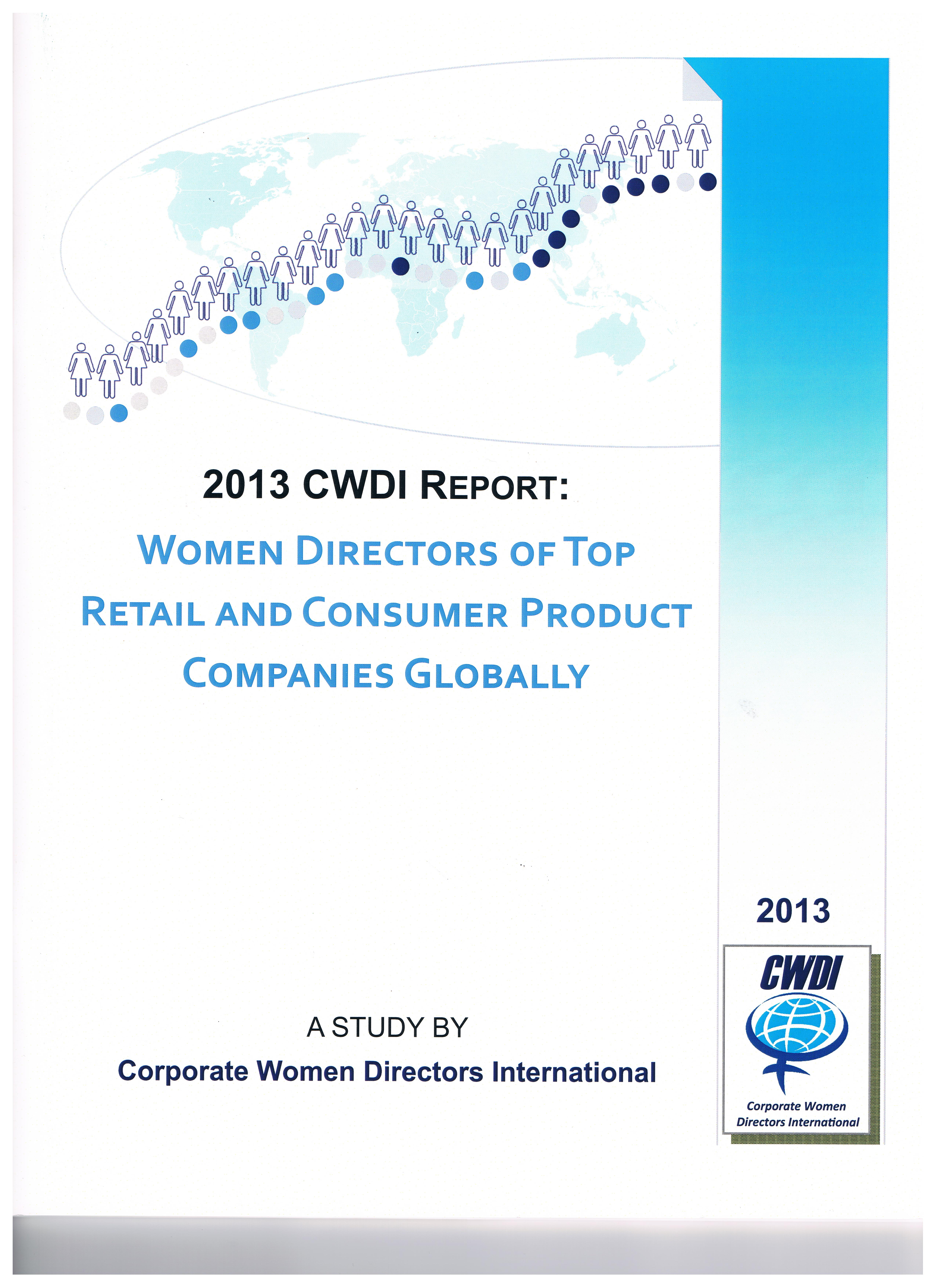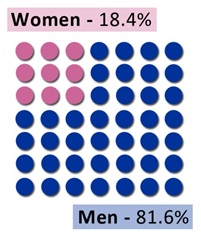 2013 CWDI Report:
2013 CWDI Report:
Women Board Directors of Top Retail and Consumer Products Companies Globally
The 2013 CWDI Report on Women Board Directors of Top Retail and Consumer Products Companies Globally focuses on 168 companies that operate in 11 global economies. The study found that women held 18.4% of board seats in the ranks of leadership within top retail and consumer product companies.
Key Findings

Women account for 18.4% of directors serving on the boards of the world’s largest retail and consumer products companies globally
- Retail and Consumer Products companies – where women’s consumer strength is most evident – outpace other industries in placing women on the boards of directors, but the numbers are far from where they should be given women’s market impact.
- The percentage of women board directors in the top retail and consumer products companies globally is 18.4%. This is 3.4% higher than the percentage of women directors on the boards of the Fortune Global 200 companies, which stands at 15%. However, men still dominate the corporate board rooms (81.6%) in this industry.
- Among the best performers, first in CWDI’s “Top Ten” list of companies with the highest percentage of female directors is Avon Products, with 60% women directors (six of ten). Avon is followed by Douglas Holdings AG, a German perfume, book, jewelry and confection retailer with over 1,900 stores, which has 56.3% women directors. Two Swedish companies have women comprising half of their board directors – Clothing retailer H+M and Axfood, one of the largest supermarket chains in Scandinavia.
- Nearly 80% (134 of 168) of the top retail and consumer product companies have at least one woman board director – a higher percentage than the 76.5% of companies in the Fortune Global 200 with one or more female directors. The majority (76%) of the retail/consumer products companies with no women directors are based in Asia-Pacific region.
- Regionally, European and North American do better in placing women on corporate boards: 23.9% of board directors are women in European retail/consumer products companies, while in North America, woman occupy 22.3% of board seats in the same industry. African companies in the study (11.4%), Asia-Pacific (9.6%), and Latin American (9.5%) retail/consumer product companies all fall significantly short of the 18.4% average representation within the industry.
-

Forty corporate leaders gathered at the Harvard Club of New York on November 11, 2013, to mark the release of the report and discuss its findings.
Quotas and gender diversity language in corporate governance codes continue to bring about higher percentages of women on boards. Companies based in countries where there is a legislative quota (Belgium, France, Italy, Netherlands, Spain) have 24% of their board seats held by women, compared to only 17.8% for those companies based in countries without a quota.
- The retail/consumer products companies based in the 11 countries with gender diversity language in their corporate governance codes do even better: 25.9% of the board seats in these companies are held by women compared to 16% in those without such language.
- The percentage of women executive officers does not parallel the percentage of women board directors. Only 12.6% of executive officer positions are held by women, 5.8% lower than the percentage of women board directors on the same companies.
- Seven women hold CEO posts in the 168 retail/consumer product companies in the study, 4.2% of the companies, three additional companies have women Board Chairs. Companies with women CEOs or Board Chairs have almost double the percentage of women on boards than the survey average – 35.8% to 18.4% — and more than double the percentage of women executive officers – 32% to 12.6%.
-

Summit President Irene Natividad listens to commentary of 2013 CWDI Report during NYC launch.
By and large, retail and consumer product companies are among the pacesetters in their respective countries. UK retail and consumer product companies, for instance, average 23.4% women board directors – 6.1% higher than the FTSE 100 average. Canada, the US, and Japan’s retail companies also outperform their country average significantly. In France, where a quota has introduced higher percentages of women onto more company boards, there is little difference between retail companies and the country average.
- Larger and mid-sized companies do much better in placing women on boards than smaller companies. The 101 large-cap companies in the report average 19.6% women board directors and the 51 mid-cap companies average 18.2%. The 16 small-cap companies in the study (including well-known brands in the US, such as Rite-Aid, Barnes and Noble and Supervalu) average only 9.4% women board directors.
- No industry has a higher percentage of companies with women board directors than the retail and consumer products industry (79.8%). Healthcare places second with 72.3% of its companies having at least one woman director on its 100 largest companies, followed by financial services (67.8%) and utilities (66.9%).
- Consumer product companies hold an edge over retail companies in placing women on boards. 22.1% of board seats in consumer product companies are held by women, while women occupy 16.2% of board seats in retail companies. Within the industry, “household and personal product companies” (27.3%) and “textiles, apparel, and luxury goods” (23.7%) companies do the best in placing women on boards. At the opposite end, “food and staples retailers” average just 13.6% of women board directors.
Sponsored By:
 To order a copy of the 2013 CWDI Report on Women Directors of Top Retail and Consumer Product Companies Globally, please click here
To order a copy of the 2013 CWDI Report on Women Directors of Top Retail and Consumer Product Companies Globally, please click here

